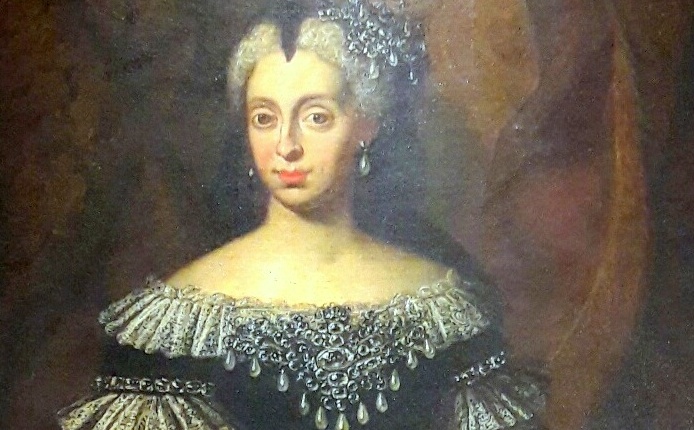A portrait of the last Medici Grand Duchess was recently donated to the City of Florence and presented at a conference in the Palazzo Vecchio on the anniversary of her death (February 18, 1743).
The Florentine’s culture editor and founder of the Advancing Women Artists Foundation, Jane Fortune has decided to underwrite the conservation of this “new” Florentine treasure.
“Though AWA solely restores art by women, I have decided that Anna Maria Luisa de’ Medici deserves to have her portrait restored to its original dignity. Florence was a center for early women artists thanks to the Medici, including the Electress Palatine, who was a prime supporter of female talent.”

The painting was commissioned in 1745 by Niccolò de’ Medici of the minor branch of the Medici; his great-granddaughter and last blood-heir Marchesa Zena Peruzzi de’ Medici inherited it from him. It was painted by an unknown painter two years after Anna Maria Luisa de’ Medici’s death, along with a twin portrait that is still in private hands. One was probably for Niccolò’s country villa, whilst the other was destined for his city palace. The portrait shows Anna Maria Luisa wearing her widow’s veil, a dress with lace ornaments in the German fashion, perhaps acquired from Dusseldorf, an elaborate jeweled brooch (Anna Maria Luisa was a passionate collector of jewellery) and her crown as the Electress Palatine.
Though many Florentines believe that Anna Maria Luisa de’ Medici donated the Medici properties to the City of Florence, this is not exactly accurate. Through an international pact, the Medici State—and all its possessions and territories and powers—passed to the Habsburg-Lorraine, and the Electress Palatine was not empowered to alter this. What she did do was add the clause making it unlawful to alienate any of this property from Tuscany, where it would remain to “ornament” (give dignity to) the state, to “benefit” the public and to “attract the curiosity of foreigners”.
This immense patrimony has become fundamental to the cultural identity of Florentines, as well as the heart of its enormous tourism industry. Florence only became a tourist destination after the famous pact.
For more information, see advancingwomenartists.org or follow AWA on Facebook and Instagram.






